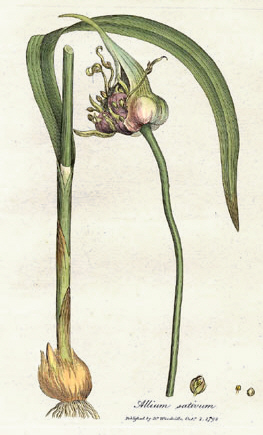
Chives, scientific name Allium schoenoprasum, is a species of flowering plant in the family Amaryllidaceae that produces edible leaves and flowers.

Allium monanthum, the Korean wild chive, is a spring vegetable with minuscule bulbous roots that have a mild onion flavor and found in the woodlands of Korea, Japan, northeastern Russia (Primorye), and northeastern China.

Allium textile is a common species of wild onion found in the central part of North America.

Allium atrosanguineum is an Asian species of onion native to China, Siberia, Mongolia, and Central Asia. It grows high in the mountains at elevations of 2400–5400 m.

Allium bidentatum is an Asian species of plant in the amaryllis family. It is native to Mongolia, Russia, Kazakhstan, and northern China. It grows in well-lit places, sometimes in saline soil.

Allium cyathophorum is a Chinese species of flowering plant in the onion genus Allium of the family Amaryllidaceae. It grows at elevations from 2,700 metres (8,900 ft) up to 4,600 metres (15,100 ft).
Allium flavidum is an Asian species of onions native to Xinjiang, Altay Krai, Mongolia and Kazakhstan. It grows in rocky areas.
Allium longistylum, also called riverside chive, is a species of wild onion native to Korea and northern China. It grows at elevations of 1500–3000 m.

Allium macrostemon, Chinese garlic, Japanese garlic or long-stamen onion, is a species of wild onion widespread across much of East Asia. It is known from many parts of China, as well as Japan, Korea, Mongolia, Tibet and Primorye. It has been collected from elevations ranging from sea level to 3000 m.

Allium maximowiczii, English common name oriental chive, is an Asian plant species native to Siberia, the Russian Far East, Mongolia, Japan, Korea and northeastern China.

Allium atroviolaceum is a species of flowering plant in the Amaryllidaceae family. it is commonly called the broadleaf wild leek, and is native to Iran, Iraq, Afghanistan, Syria, Lebanon, Saudi Arabia, Turkmenistan, Turkey, Georgia, Armenia, Azerbaijan, southern European Russia and the Caucasus, but widely cultivated in other regions as a food source and for its ornamental value. The species is sparingly naturalized in parts of the United States and also in southeastern Europe.

Allium ramosum, called fragrant-flowered garlic or Chinese chives is a northern Asian species of wild onion native to Kazakhstan, Mongolia, Siberia, the Russian Far East, and northern China. The species is also naturalized in a few places in eastern Europe. In its native range, it grows at elevations of 500–2100 m.

Allium sacculiferum, also called northern plain chive or triangular chive, is an East Asian species of wild onion native to Japan, Korea, eastern Russia, and northeastern China. It is found along the banks of lakes and rivers at elevations less than 500 m.
Allium spirale, also known as Korean aging chive, is a plant species native to Korea, Primorye, and parts of China. It is cultivated in many other regions and has for some reason obtained the common name German garlic. Other common names include spiral onion, corkscrew onion, and curly chives.

Allium thunbergii, Thunberg's chive or Thunberg garlic, is an East Asian species of wild onion native to Japan, Korea, and China. It grows at elevations up to 3000 m. The Flora of China recognizes A. tunbergii and A. stenodon as separate species, but more recent sources combine the two.

Allium tenuissimum is an Asian species of wild onion native to Mongolia, Asiatic Russia, Korea, Kazakhstan and China.
Allium griffithianum is a species of flowering plant in the family Amaryllidaceae. It is an onion found in the high mountains of Pakistan, Afghanistan, Kyrgyzstan, Uzbekistan and Tajikistan. It is a perennial herb up to 40 cm tall, with a hemispherical umbel of flowers, white or light pink or pale purple.
Allium stocksianum is a species of flowering plant in the Amaryllidaceae family. It is native to Pakistan, Afghanistan and Iran. It is a perennial herb up to 15 cm tall, with a bulb up to 20 mm across. Umbels are hemispherical, up to 5 cm across, with pink to purple flowers.
Allium frigidum is a species of flowering plant in the family Amaryllidaceae. It is endemic to Greece.

Allium is a large genus of monocotyledonous flowering plants with around 1000 different species accepted in botanical science, making Allium the largest genus in the Amaryllidaceae plant family and places Allium amongst the largest plant genera in the world. Many of the species are edible, and some have a long history of cultivation and human consumption as a vegetable including the onion, garlic, scallions, shallots, leeks, and chives, with onions being the second most grown vegetable globally after tomatoes as of 2023.













